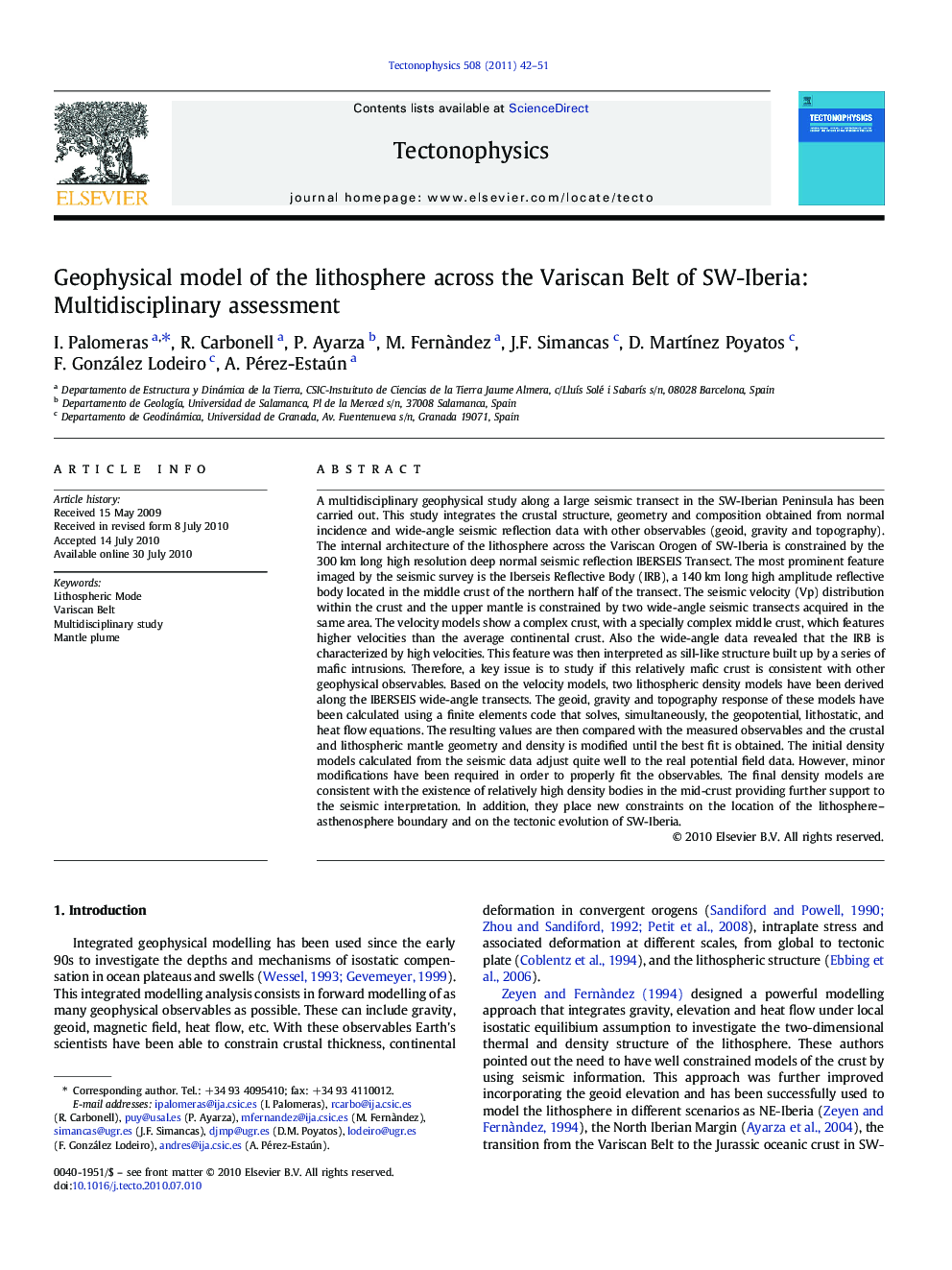| کد مقاله | کد نشریه | سال انتشار | مقاله انگلیسی | نسخه تمام متن |
|---|---|---|---|---|
| 4693040 | 1636841 | 2011 | 10 صفحه PDF | دانلود رایگان |

A multidisciplinary geophysical study along a large seismic transect in the SW-Iberian Peninsula has been carried out. This study integrates the crustal structure, geometry and composition obtained from normal incidence and wide-angle seismic reflection data with other observables (geoid, gravity and topography). The internal architecture of the lithosphere across the Variscan Orogen of SW-Iberia is constrained by the 300 km long high resolution deep normal seismic reflection IBERSEIS Transect. The most prominent feature imaged by the seismic survey is the Iberseis Reflective Body (IRB), a 140 km long high amplitude reflective body located in the middle crust of the northern half of the transect. The seismic velocity (Vp) distribution within the crust and the upper mantle is constrained by two wide-angle seismic transects acquired in the same area. The velocity models show a complex crust, with a specially complex middle crust, which features higher velocities than the average continental crust. Also the wide-angle data revealed that the IRB is characterized by high velocities. This feature was then interpreted as sill-like structure built up by a series of mafic intrusions. Therefore, a key issue is to study if this relatively mafic crust is consistent with other geophysical observables. Based on the velocity models, two lithospheric density models have been derived along the IBERSEIS wide-angle transects. The geoid, gravity and topography response of these models have been calculated using a finite elements code that solves, simultaneously, the geopotential, lithostatic, and heat flow equations. The resulting values are then compared with the measured observables and the crustal and lithospheric mantle geometry and density is modified until the best fit is obtained. The initial density models calculated from the seismic data adjust quite well to the real potential field data. However, minor modifications have been required in order to properly fit the observables. The final density models are consistent with the existence of relatively high density bodies in the mid-crust providing further support to the seismic interpretation. In addition, they place new constraints on the location of the lithosphere–asthenosphere boundary and on the tectonic evolution of SW-Iberia.
Research Highlights
► Lithospheric model of SW-Iberia that integrates different geophysical observables.
► Validate the crustal structure and physical properties obtained by seismic data.
► Constrain the LAB topography in SW-Iberia.
► Obtain the temperature distribution in SW-Iberia.
Journal: Tectonophysics - Volume 508, Issues 1–4, 20 July 2011, Pages 42–51